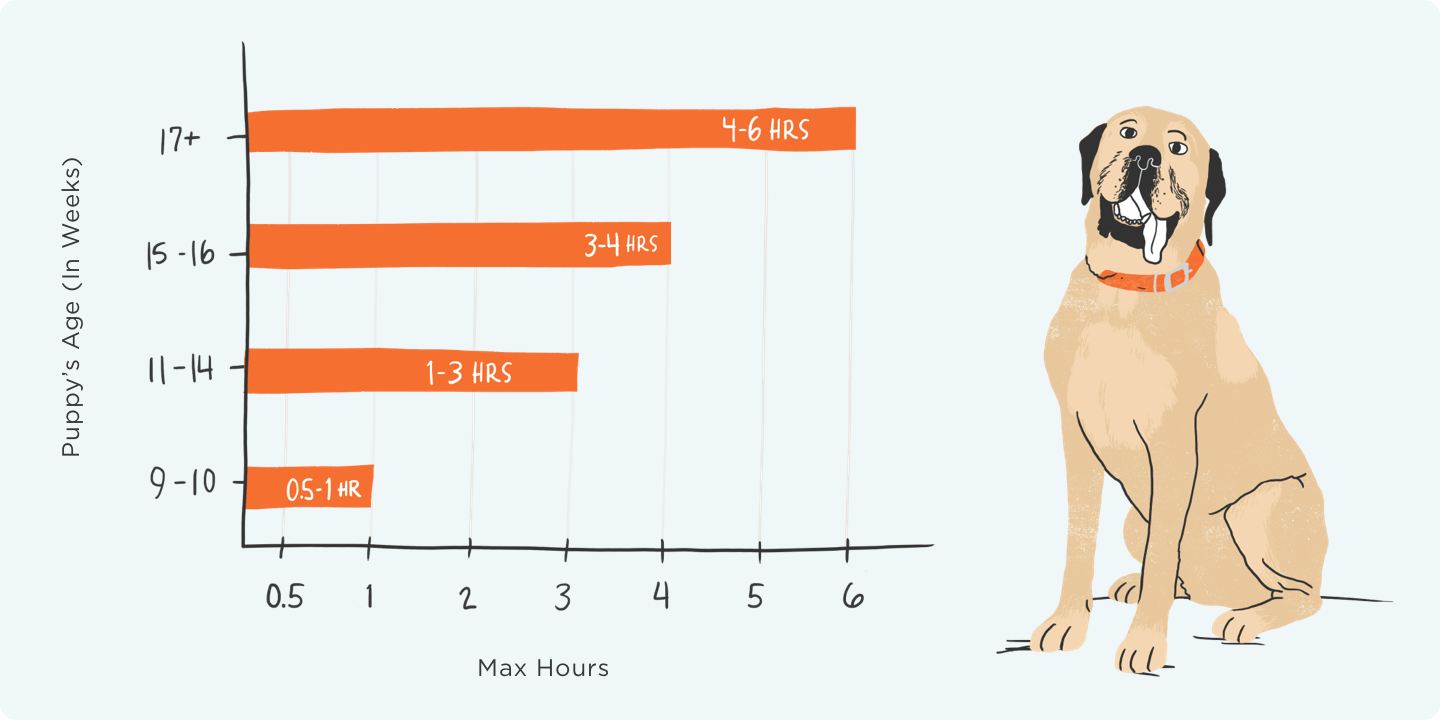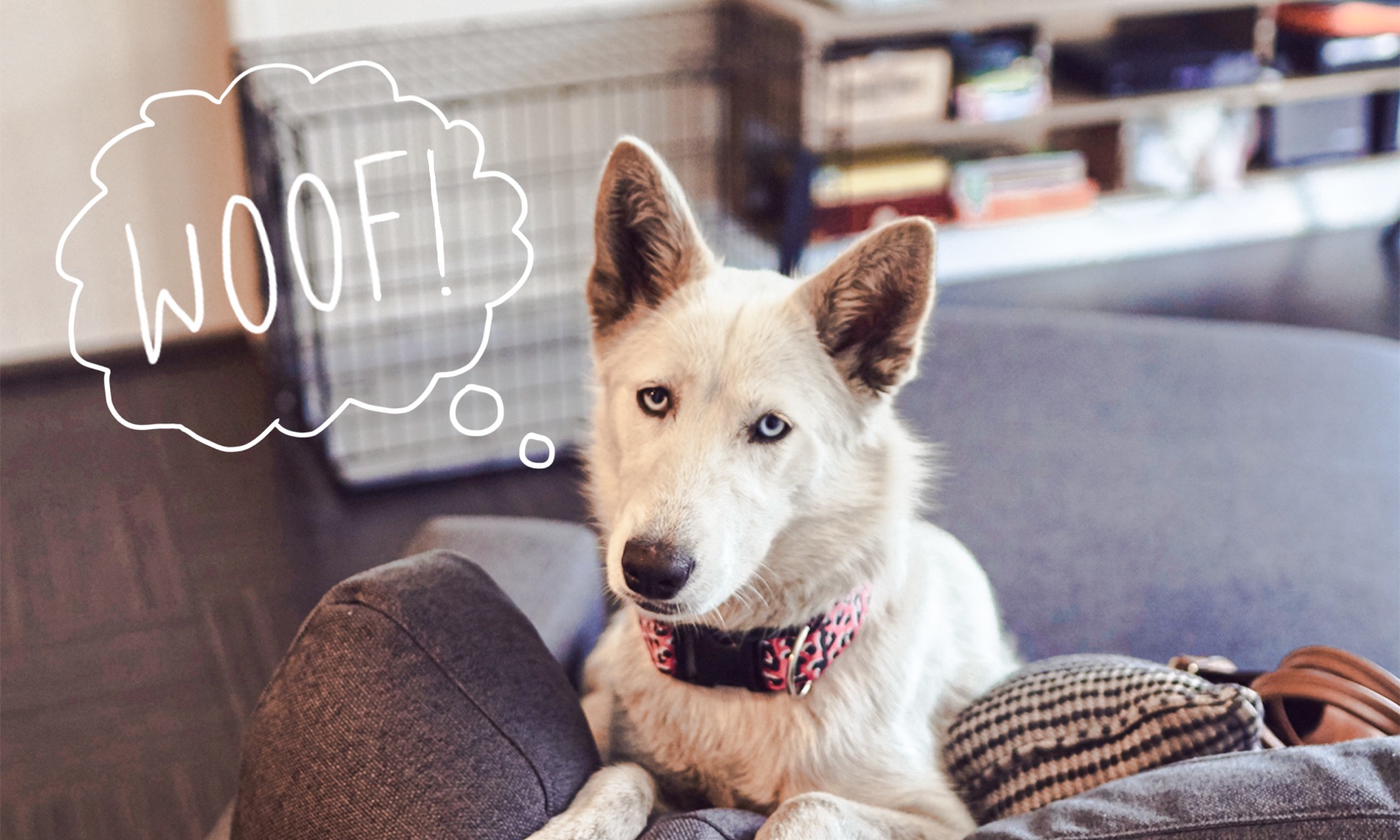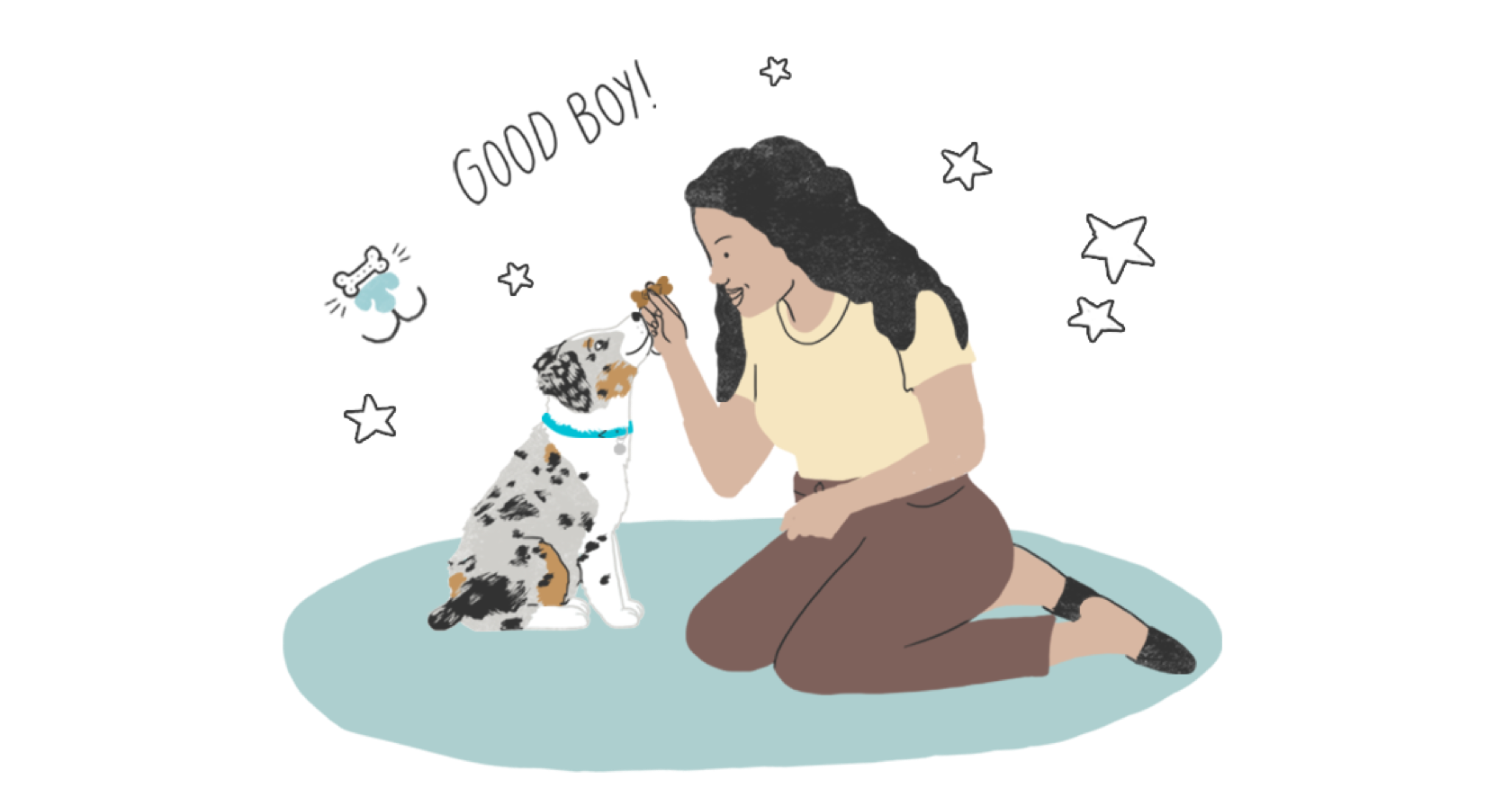Congrats! You’ve cleared out a prime spot in the living room, and you’re ready to cross crate training off your to-do list. Transition your dog from a crate novice to total pro in just a few minutes per day with this simple training regimen.
Getting Started With Crate Training Your Dog
The first step is to show your dog that their crate is a place where great things happen.
- Tempt Them With Treats
Start by tossing some treats around and inside the crate. Then let your dog check it out. Chances are you won’t have to do too much convincing. - Feed Them Their Meals
Meal time happens inside the crate — but not with the door closed. - There’s an Open-Door Policy
Leaving the crate door open when you’re at home allows your dog to go inside anytime they want. And the more access they have, the more they’ll love it.
Closed-Door Crate Training
Two 15-minute training sessions each day is usually enough time to help your dog fall in love with their crate. But before you kick off your first closed-door training session, give them time to stretch out their legs or use the bathroom.
Step-by-Step Crate Training
- Warm up your dog with a treat toss. Throw their favorite treat or toy into the crate, followed by a crate command, such as “go to crate.”
- Once your dog takes the bait, give praise and bonus treats to encourage them to sit or lie down. As soon as they’re settled, close the door and continue to lay on the praise and treats.
- Try interval training. Start with stints of 15 seconds with the door closed, giving verbal encouragement and treats along the way to reward positive behavior. Then let them out for some praise and more treats. Go with your next interval and continue to increase the time as your dog’s crate comfort increases.
- If your dog is whining or subtly telling you that they’re not having it, wait until they’ve been quiet for 5 seconds before you open the crate door. If it’s a total freak-out, just let them out and try another time. You want this to be fun for both of you, so no one should be breaking a heavy sweat.
- Stay in the room with your dog during these early training stages. Once your dog seems to be getting more comfortable, you can increase your distance from the crate, and eventually, leave them on their own.
Success! Your Dog Is Ready to Stay Alone
So, you’ve turned your dog’s crate into their ideal retreat. But even once they’re loving their new space, it’s still important to stick within the suggested stay times based on age. These recommendations are a great place to start, and always use your intuition to gauge comfort level.

If you plan on being out of the house for longer than the maximum suggested time, consider setting up a larger safe space in your home and putting your pup’s open-door crate in it.
ZPC-00177R2



